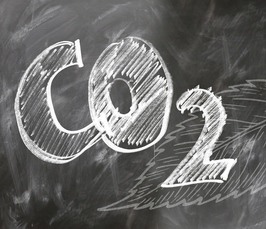MPI Colloquia Series: Prof. Jennifer Wilcox, Comparison of CO2 Capture from Point Sources vs the Atmosphere and Scales of Utilization
MPI Colloquia Series: Prof. Jennifer Wilcox, Comparison of CO2 Capture from Point Sources vs the Atmosphere and Scales of Utilization
- Date: Sep 5, 2019
- Time: 04:00 PM - 05:00 PM (Local Time Germany)
- Speaker: Prof. Jennifer Wilcox
- Worcester Polytechnic Institute, Chemical Engineering, MA, USA
- Location: Max Planck Institute Magdeburg
- Room: Big Seminar Room "Prigogine"
- Contact: sek-pcp@mpi-magdeburg.mpg.de

The Max Planck Institute Magdeburg invites you to its series of colloquia. Top-class scientists, invited by the Max Planck Institute Magdeburg, give a survey of their research work. Everybody who is interested, is invited to attend.
Comparison of CO2 Capture from Point Sources vs the Atmosphere and Scales of Utilization
Several carbon capture applications will be discussed including opportunities in the US from both large-scale point-source emissions such as natural gas fired power plants and emissions associated with the industrial sector. In addition, the separation of CO2 from extremely dilute systems such as the atmosphere will be compared alongside point-source capture. A technoeconomic analysis with careful carbon accounting of energy flows has been considered and will be presented.
Focus will be given toward the scale and challenges associated with the difficulty of avoiding process emissions resulting from chemical reactions that emit CO2 as a byproduct. Some of the top-emitting industries include cement manufacturing, refining, iron and steel and the pulp and paper industry. Process emissions are unique to stationary combustion emissions and depending on the industry and particular facility may have multiple streams with varying levels of CO2 purity. There is no single solution that will work for avoiding CO2 emissions from all industrial sectors, which makes finding solutions to these emissions difficult and they represent roughly 20% of global emissions. Costs associated with CO2 capture from point sources associated with the industrial sector vary significantly depending on the complexity of the given facility.
In contrast, challenges associated with direct air capture (DAC) will also be of focus. High energy requirements associated with DAC, combined with the large amount of equipment and materials to capture CO2 on a significant scale, underscore the costly nature of this approach today. Three scenarios have been identified that allow for the production of compressed “net-removed” high-purity CO2 for less than $200/t. The scenarios investigated include the usage of thermal energy from geothermal and nuclear power plants, in addition to the direct use of stranded natural gas to produce steam.
Costs of separation from either air or point-sources will be presented and depending on the scale of CO2 handled per year determines whether trucking or pipeline is the most cost-effective mode of transport. Depending on the mode, compression conditions and subsequent transport costs are calculated based on the various sinks of CO2, whether they may be for beneficial reuse or geologic storage. Although some utilization pathways result in the re-emission of CO2, it is recognized that they provide economic incentive to deploying capture plants, which is an essential first step toward reaching the required scale of both avoided and net removed emissions (i.e., negative emissions) by mid-century. In addition, the federal tax credit 45Q was taken into account when the production streams of CO2 were sufficient enough to meet the minimum requirement (i.e., 100 ktCO2/yr for industrial and DAC applications and 500 ktCO2/yr for natural gas fired power plants).